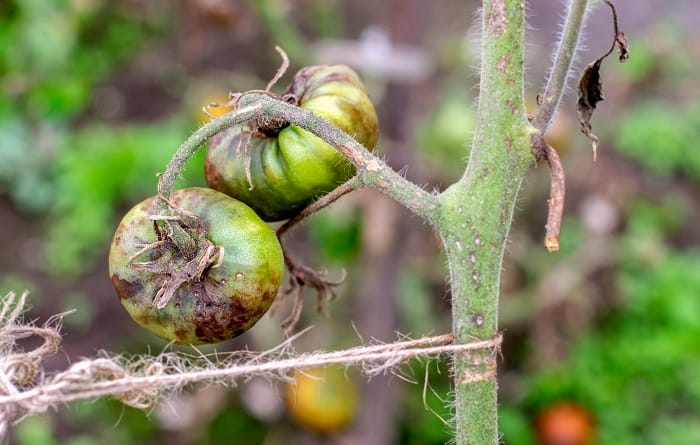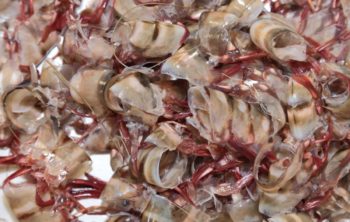One common problem you would encounter in your tomato garden is a rot at the blossom end of the fruit. It would be best to prevent the bottom of your tomatoes from rotting, but once it has started, with simple measures, you can prevent it from happening again on the same plant.
So if you are asking how do I fix blossom end rot on my tomatoes, you have come to the right place. Before I get into all the details of how best to improve your plant’s harvest, lets first find out what causes blossom end rot on a tomato plant.
What is Blossom End Rot?
Most gardeners think that an insect or disease problem causes a blossom end rot; when it is an anomaly that occurs as a result of inadequate uptake of Calcium by the plant’s fruits and leaves. You mustn’t confuse this for calcium deficiency in the

The reason for a discolored patch beneath the fruit could be in the flowering stage when leaves and fruits are competing for Calcium to aid in their development. While using slake lime and adding Calcium to the
Why your Tomatoes are not Receiving Calcium
If, after performing a
- The pH of the
soil is low, thereby causing nutrient absorption problems - There is excess nitrogen application resulting in poor nutrient uptake
- There is no enough water for the absorption of nutrients due to inconsistent watering.
How to Fix Blossom End Rot On Tomatoes?
You can follow any of the following methods outlined below if you notice the bottom of your fruits is darker than usual.
Keep Tabs on Nitrogen Application
While your plants need to get the right supply of nitrogen, you want to make sure you do not apply more than necessary. When too much of the nutrient is in the
Don’t Allow the Plants Go Thirsty.
You should keep a watering schedule for your garden plant and stick to it. If you want your plants to be able to absorb nutrients properly, then you need to ensure the earth remains fertile. If you use an irrigation system in your garden, you would want to water deeply but less frequently so as not to waterlog the ground. Also, if you are using a container, you will need to water regularly, and it is best to use soaker hoses or drip watering instead of a foliar application for your tomatoes.
Mulch your Plants
Using organic mulch around your plant can help improve moisture retention. You don’t need to use too much; about three-inch of mulch is enough to get the job done. The standard mulch you can use is straw since it is readily available and can last a while. If you also have a weed problem in your garden, mulching will also get rid of it.
Stay Clear of the Plant Roots During Flowering
It is also necessary that you do not disturb the plant root once it starts to fruit. You will have to take extra care when weeding or to mulch your plant so as not to stress the
Use the Right Fertilizer for Soil Amendments
If you need to amend the
Before Planting
If you are preparing to plant tomatoes in the planting season, you can prevent bottom end rot by using compost rich in Calcium to improve your
FAQ’s
What is tomato end rot?
Blossoms end rot is caused by a soilborne fungus called Botrytis cinerea (Bc). This is a relatively common fungus in the summer and fall months, and is the main reason why tomato plants are pruned off when they flower.
It usually starts out as a small, dark spot or a bump that enlarges.
Can you reverse blossom end rot on tomatoes?
There are many factors that can cause blossom end rot in tomatoes. The two most common factors I see are too much nitrogen and insufficient calcium. If your soil pH is more than 2.2 you will need to adjust your soil pH to 3. The best way to do this is with lime.
You can add 1/4 cup of quicklime per 10 gallons of water or mix 1/4 cup of calcium carbonate in a bucket of water until it is dissolved. Then pour the solution on top of your soil, let it sit for an hour or two, then rake it into your garden bed.
You can spray for blossom end rot with a foliar application of Bordeaux mix. There are many products available for controlling tomato leaf spot, including systemic fungicides, like Mancozeb and Captan.
How do I keep my tomatoes from rotting on the bottom?
Tomatoes are a warm-weather crop that require consistent temperatures of at least 70 degrees for a long period of time. If your garden is not in a greenhouse or covered with shade cloth, you will need to use a high tunnel to protect your plants and fruit. High tunnels are growing houses made of transparent plastic.
They are available in many shapes and sizes and can be purchased from many different companies. Most high tunnels have an insulated floor and a roof that comes down to ground level. Growers who are growing tomatoes in full sun should consider using a high tunnel. You will need to provide ventilation if you are growing tomatoes in a high tunnel. The best way to ventilate is to leave the lid slightly open.
What is a good source of calcium for tomatoes?
Calcium is an essential nutrient needed for the growth and development of all parts of the plant. Calcium helps the plant resist cold and drought stress.
Calcium chloride is often used as an effective foliar fertilizer, but also as a soil drench. Calcium chloride is a water soluble form of calcium. Calcium chloride is used to increase the uptake of nutrients by plants in soils deficient in calcium and other elements. It is also used to lower the pH in acidic soils.
Water regularly and use a rich mulch to improve moisture retention. Tomatoes require enough Calcium and would only be able to absorb it from the
As soon as you notice any discolored fruits, you should immediately remove them so as they can stop competing for nutrients with the healthy ones. If you have a backyard compost pile, you can add rotten fruits to it to improve the green materials in the mix.

It is also worth mentioning that there are varieties of tomato seeds that are resistant to bottom end rot, so you may want to consider getting those for the next planting season if you do not wish to suffer from the condition. You should also be aware that the rot does not spread amongst the fruits, as it is not a viral disease. It is only a condition that reduces your yield when it is time for harvest.
Do you grow tomatoes in your garden? Have you ever had to deal with bottom end rot? We will like to hear from you in the comment section.

Josephine is an enthusiastic gardener who loves to spend her spare time tending to her garden. She is passionate about growing her own food, and aspires to one day have her own vegetable garden. Josephine is also an animal lover and often takes in stray cats and dogs. She enjoys spending time with her pets in the garden, and is often seen playing with them or watering her plants. Josephine is an avid reader and enjoys learning about new gardening techniques and plants. She is always looking for ways to improve her garden and make it more beautiful. She is a great friend, always willing to lend a helping hand when needed. Josephine‘s passion for gardening and love of animals make her a wonderful addition to any garden.




